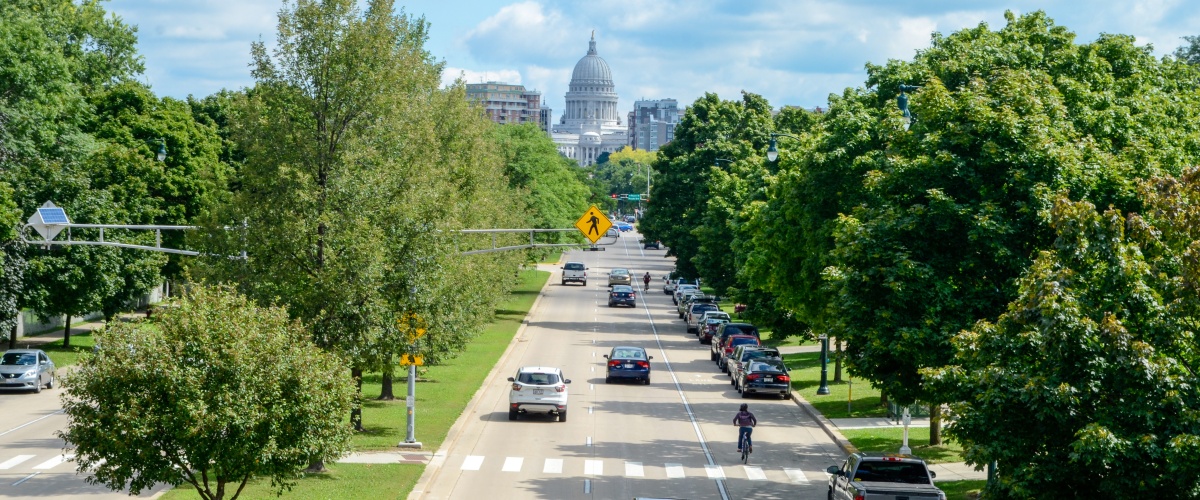Tools for Planning a Better Bike Network
As communities across Dane County work to build safer, more connected biking routes, the Greater Madison MPO has developed and supported a variety of tools to guide local efforts. These resources help planners, policymakers, and local agencies evaluate network comfort, improve wayfinding, and design infrastructure that works for everyone—from avid bicyclists to occasional weekend riders.
Madison Area Low-Stress Bicycle Network
The Madison Area Low-Stress Bicycle Network uses a data-driven method called Level of Traffic Stress (LTS) to assess how comfortable different streets are for biking. LTS ratings are based on factors like road design, speed limits, and traffic volumes.
This report explains how the LTS system works and how it’s being used to:
- Provide better biking directions
- Measure how accessible destinations are by bike
- Identify gaps and barriers in the low-stress network
Low-Stress Bicycle Network Report
Updated LTS Segment Scoring Methodology
Dane County Bicycle Wayfinding Manual
The Dane County Bicycle Wayfinding Manual is a step-by-step guide for planning and installing directional signage on bikeways. It’s designed especially for agencies and organizations that may not have expertise in traffic engineering or sign design.
This manual was developed through a collaborative planning process between October 2015 and May 2016, with input from Dane County Parks, municipal staff, and the Greater Madison MPO (formerly the Madison Transportation Planning Board).
